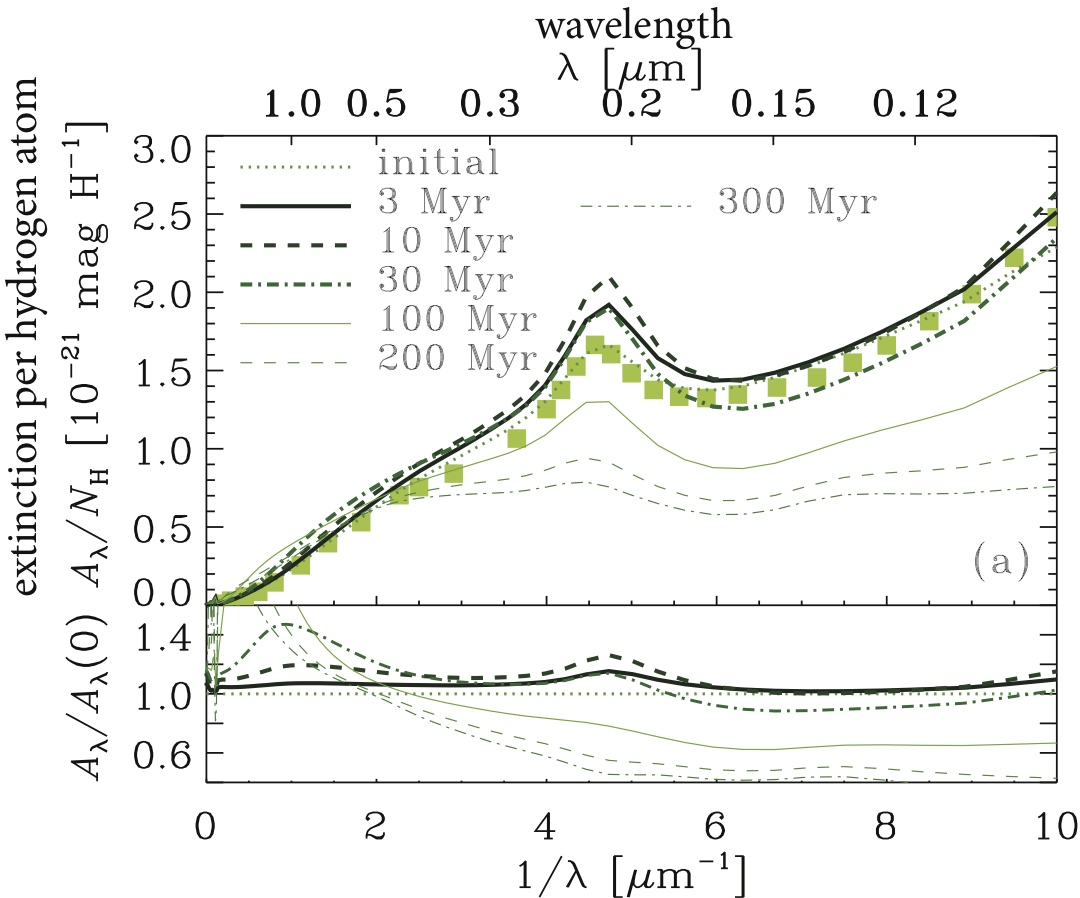Coagulation (grain–grain sticking) and accretion (adsorption of gas phase atoms onto grains) pushes the grain size distributions to large sizes. These processes are expected to balance shattering. As we have shown in Asano et al. (2014), the extinction curve (wavelength dependence of dust absorption + scattering) observed in the Milky Way is better reproduced if we include coagulation. For coagulation, we adopt the grain motion driven by turbulence to estimate the grain–grain collision frequency and coagulation efficiency in dense clouds. Accretion is the process that governs the total dust content in metal-enriched system (i.e., galaxies whose metallicities are solar or nearly solar). We investigated the variation of extinction curves caused by coagulation and accretion (see the figure below): The variation is broadly consistent with the one actually observed in various lines of sight in the Milky Way (Voshchinnikov & Henning 2010).
See Hirashita & Voshchinnikov (2014) and Voshchinnikov & Hirashita (2014) for details.
